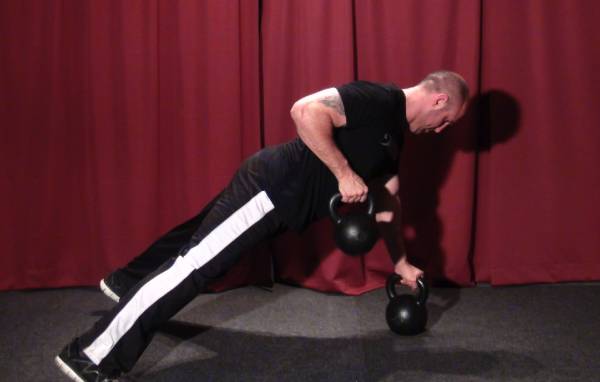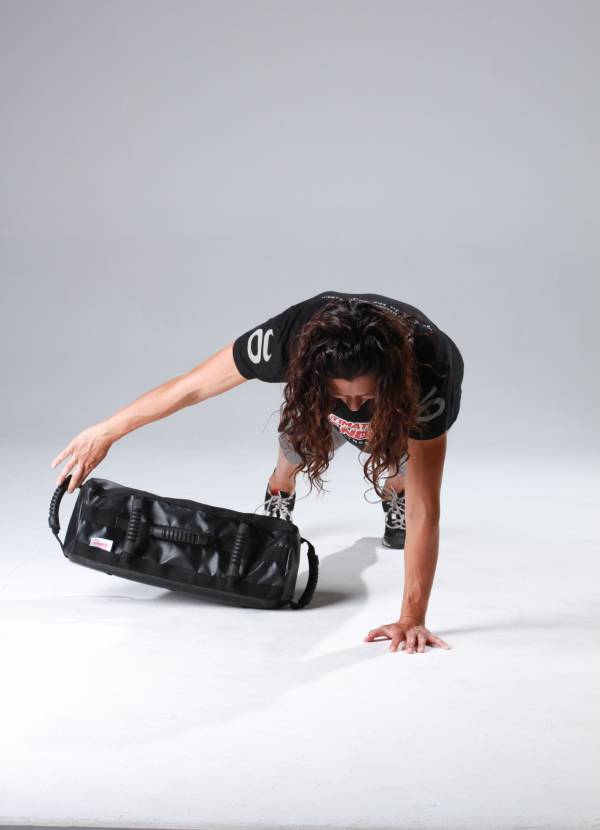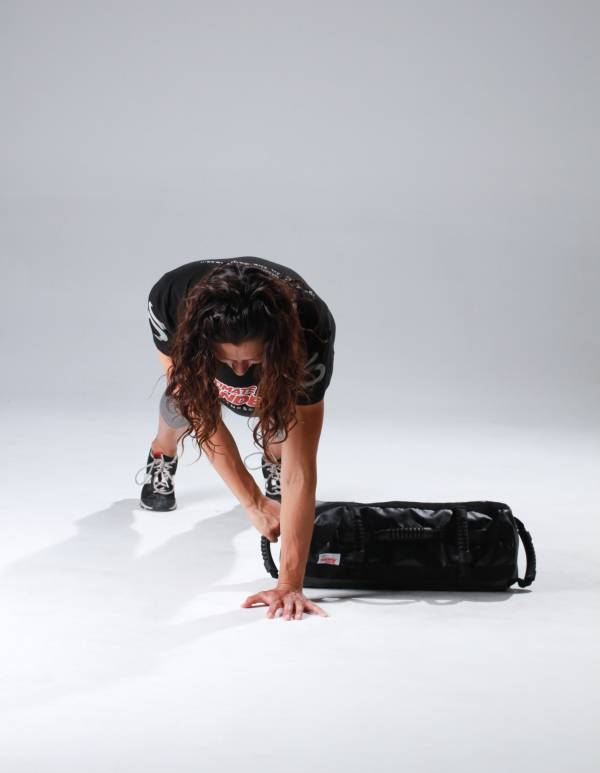In my first article on combining sandbags and kettlebells, I discussed understanding the differences of our training tools. After all certain tools do things well that others do not. We shouldn’t be choosing our tools based on how tough they make us look or how difficult they make an exercise, but instead, on how they are able to teach us to move more effectively and efficiently.
Today’s part two is about just that. I am going to show you how using sandbags and kettlebells helps us layer progressions and get people performing more complex drills faster and safer. In order to illustrate this point I am going to talk about three different series in which we can see these implements compliment each other quite well.
If you hang out on social media long enough or even open up some popular fitness magazines you are bound to see this drill being shown. Usually very badly. Most coaches and lifters love this drill because it feels “hard.” They feel their abs and they are greatly challenged to row the weight off of the ground.
What is the true purpose of the renegade row? We have to understand the intent of the movement in order to determine what makes technique right and wrong. There are three primary benefits of the renegade row.
1. Anti-Rotation Training:
The most common mistake in the renegade row is making it into a rotational exercise. We see people twisting and turning in every effort to leverage themselves and lift the weight off the ground. This is a compensation pattern because most people lack anti-rotational strength.
 If this were about rotational training we would want to be in a different position because the hip needs to move more freely and the feet need to pivot. Otherwise the stress is going to be applied to the lumbar spine, which only possesses about 10-12 degrees of rotation.
If this were about rotational training we would want to be in a different position because the hip needs to move more freely and the feet need to pivot. Otherwise the stress is going to be applied to the lumbar spine, which only possesses about 10-12 degrees of rotation.
Anti-rotational strength is crucial in safety and proper core development. Physical Therapist, Shirley Sahrmann stated in her book Diagnosis and Treatment of Movement Impairment Syndromes regarding the true role of the abdominals, “During most daily activities, the primary role of the abdominal muscles is to provide isometric support and limit the degree rotation of the trunk. … A large percentage of low back problems occur because the abdominal muscles are not maintaining tight control over the rotation between the pelvis and the spine at the L5-S1 level.” Therefore, learning to resist forces is one of the best ways to get a truly functional core. In other words, don’t twist!
2. Ground Forces:

 One reason we see a great deal of rotation is due to the lack of tension and force the lower body creates. The goal is to drive through the balls of the feet and lock the legs, which causes the glutes to tighten. By really tightening the glutes you will feel your pelvis lock down and that helps prevent movement in the low back. This is the same strategy as pressing overhead in the standing position, so the renegade row is helpful in teaching these principles.
One reason we see a great deal of rotation is due to the lack of tension and force the lower body creates. The goal is to drive through the balls of the feet and lock the legs, which causes the glutes to tighten. By really tightening the glutes you will feel your pelvis lock down and that helps prevent movement in the low back. This is the same strategy as pressing overhead in the standing position, so the renegade row is helpful in teaching these principles.
3. Shoulder Stability:
Many people think the renegade row is about the upper back. In a very small way this would be true. However, because we are in such a compromised position, it limits the amount of force the body can create in the upper body. Instead, we are looking at how to create shoulder stability, especially of the “stance” arm. A common compensation pattern is a very subtle move of the shoulder actually rotating into an unstable position. We see this when people try to leverage themselves, causing the crease of the elbow of the support arm to point inwards. Rather, in order to create stability, we want to see the crease of the elbow pointing almost straight ahead.
Watch the video now to learn why the sandbag lateral bag drag is the perfect compliment and regression to the renegade row:
Rotational Lunge
I developed this exercise back around 2006 to address some very specific needs – the first being a terrific example of true multi-planar work. Working in all three planes at once has numerous benefits:
1. More Functional-Based Training:
The word that everyone hates does have a purpose. One way to look at functional-based training is seeing how the body is stressed and moves in most athletic and everyday activities. If we do so, then we see the body is constantly stressed in multiple angles and planes. Even an activity as simple as walking requires multi-planar forces to perform. Yet, in the weight room our actions are largely dominant in one plane, the sagittal plane.
2. Single Leg Eccentric Strength:
Renowned Strength Coach and NSCA Strength Coach of the Year winner, Robert Dos Remedios, says he loves using the rotational lunge to teach athletes how to absorb eccentric forces to avoid knee injuries. He knows the same thing that biomechanics experts Dr. Michael Yessis states in his book Secrets of Soviet Sports and Fitness Training, that one of the leading cause of injury is not being able to absorb eccentric forces. Coach Remedios points to the fact that this is especially true of female athletes who are far more prone to non-contact ACL injuries.
3. Huge Metabolic Effect:
Very few people realize that the rotational lunge is a more complex form of the dumbbell or kettlebell swing. Unlike the Olympic lifts, the lifter doesn’t produce vertical forces, but more of a projection of the weight. Because of the amount of movement the body creates along with the unstable movement of the sandbag around the body, this becomes an incredibly demanding exercise. In fact, we have done anecdotal work that demonstrated higher metabolic output of a rotational lunge at half the weight of that of a two-handed kettlebell swing. This isn’t an implement versus implement comparison, but more of a look at how changing stability can cause huge metabolic results.



If you didn’t watch the video earlier, be sure to watch it now and see how the kettlebell can be a very valuable regressive movement. And for our third exercise progression, watch all the way to the end to our kettlebell and sandbag clean exercise.
If we understand our tools much better we can provide far more specific programs and results to our clients. No longer should we be looking at our tools as “just another tool,” but rather the right tool.
Read Josh’s first article on why you should use kettlebells and sandbags together:
Why and How to Combine Kettlebells and Sandbags (Includes 3 Workouts)






